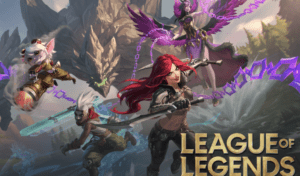My journey with games has been a relentless oscillation between love and disillusionment. Growing up in Korea, games were my playground and my refuge, the thrilling allure of otherworldly narratives and fantastical realities commanding hours of my attention. My fascination was so intense, games were more than just designed constructs, they felt real, vibrant, and immensely captivating. I revelled in conversations about gaming with friends, immersing myself in the mythical realms where my childlike sense of wonder found an extraordinary playground.
The popular game League of Legends encapsulated me when I was in middle school. Its captivating universe took hold of me, its allure so compelling that it began affecting my academic performance and led to constant fights with my parents. In retrospect, my attachment wasn’t solely anchored in the escapism i
t offered or the sense of control it provided amidst the turbulence of adolescence. It was the narratives, the weaving of captivating stories that held me captive, turning characters into living entities in my imaginative landscape.

However, in high school, the disillusionment soon punctured the magical bubble I had lived in. I began to see games as cold, profit-driven entities. The magic began to dissolve, replaced by the stark realization of their manipulative design aimed at relentless attention capture. The fantastical became mundane, and the magic withered away, replaced by an aversion towards these seemingly artificial constructs of consumer culture. The characters and the artefacts that I had built such deep appreciation for seemed nothing more than a line of code in some large server codebase.
This perspective on games, however, was fundamentally reshaped when I enrolled in CS247G. It illuminated a fresh perspective on gaming, dispelling my disenchanted worldview and reigniting my childhood enchantment. The class broadened my horizons, revealing that games are not mere manipulative constructs but carefully crafted worlds that offer unique experiences, comfort, exploration, and joy. The critical play assignments not only reacquainted me with my love for games but provided a fresh lens to view them from a designer’s perspective. Hence, I would like to thank the teaching team for providing such a great experience and changing my perspective on games.
The class ingrained in me compelling concepts like Mechanics, Dynamics, and Aesthetics, reshaping my understanding of games as intent-filled constructs rather than mere attention traps. Game Design patterns, such as those for building friendships, offered invaluable insights into designing environments that foster social connections. The pivotal role of narrative in games particularly resonated with me, as narratives were my primary love for games in my childhood. As a designer, I now aspire to recreate the magical allure I felt as a child, infusing my creations with a sense of wonder and captivating narratives.
Working on P2 was a journey of growth and discovery. I refined my development skills using Unity, and the focus on providing instant feedback and continuous player communication significantly enhanced my design process. Although honing my Unity skills was challenging, the experience of directly designing and building the game was immensely rewarding.
One of the profound realizations during the course was understanding the impact of gender in gaming. As someone who previously perceived gaming as a male-dominated sphere, discovering that 40-45% of the gaming population identified as female shattered my ingrained biases. This revelation prompted me to question and deconstruct many of my preconceived notions, pushing me to consider more inclusive design approaches. This awareness led us to adopt a gender-neutral narrative for P2, avoiding sexualized characters. I especially enjoyed playing the Last of Us 2 game while doing the critical play assignment. Understanding how the game strives to break down the barrier of gender norms in the gaming study was very apparent and inspired me to see games as a transformative tool for social-cultural shifts.

As I venture into the world of AR/VR, I eagerly anticipate implementing these concepts within a 3D environment. I aspire to harness the user experience skills acquired from playtesting and apply them in my future projects, with a focus on creating immersive, inclusive, and captivating gaming experiences. I now view games as a convergence of art, storytelling, and technology, a perspective that will undoubtedly guide my journey in the gaming industry.



